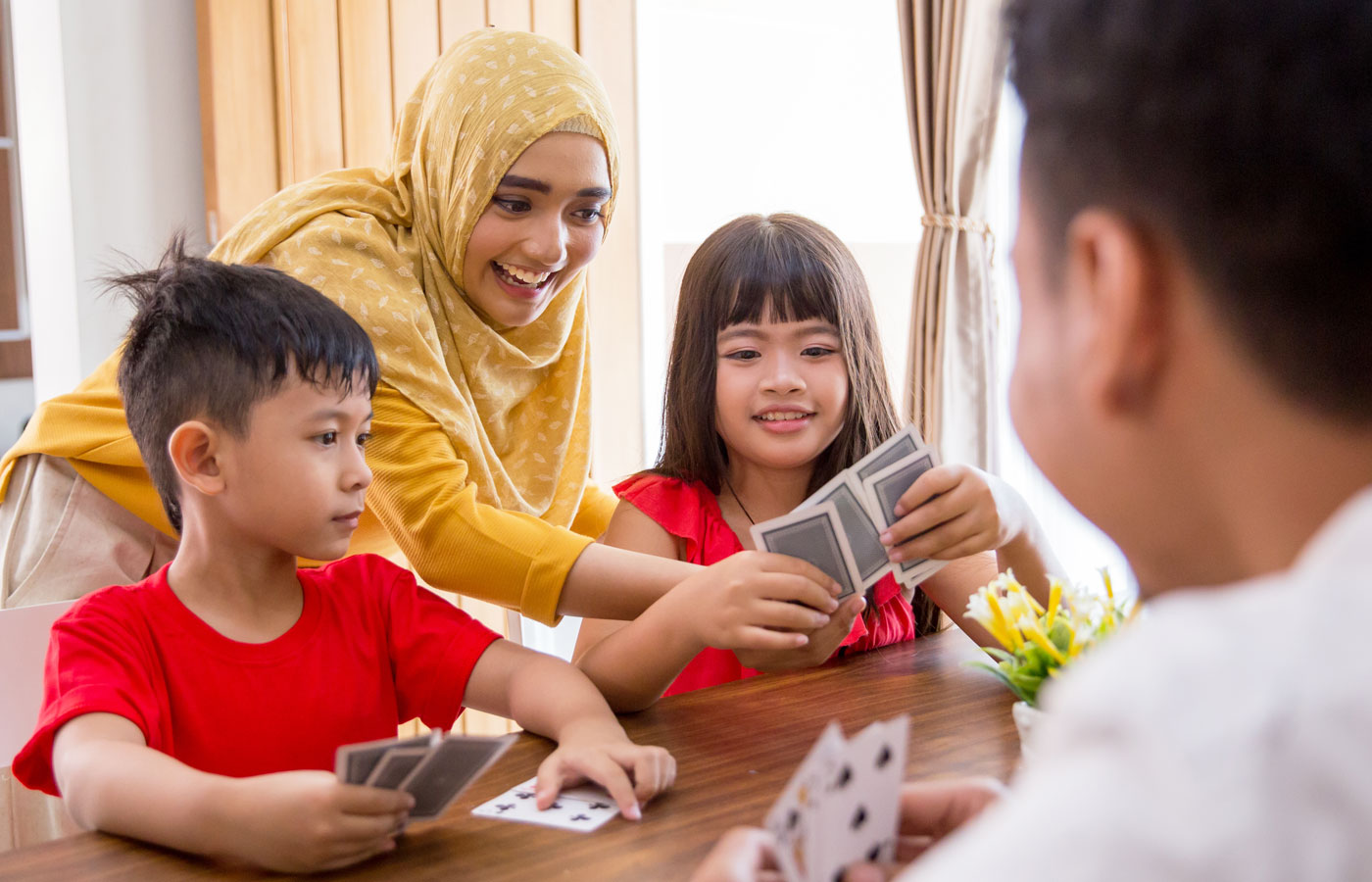Best Card Games for Kids That Are Easy to Learn

Card games are a classic SBOBET and timeless way to entertain children, encourage social interaction, and foster essential cognitive skills. Whether it’s a rainy day at home, a family gathering, or a road trip, card games provide a fun and engaging activity that’s easy to set up and play. Best of all, many card games are easy to learn, making them perfect for kids of all ages. From developing strategic thinking to improving memory and cooperation, these games also serve as excellent educational tools while delivering hours of entertainment.
Here’s a list of some of the best card games for kids that are simple to learn, but also provide a lot of fun and laughter.
1. Go Fish
Go Fish is a fantastic introduction to card games for younger children, as it’s simple, yet engaging. The goal of the game is to collect as many matching sets of four cards as possible.
How to Play:
- Each player is dealt five to seven cards (depending on the number of players), and the rest of the deck is placed face down in a pile.
- Players take turns asking another player if they have a specific card (e.g., “Do you have any queens?”). If the other player has the card, they must give it to the asking player. If not, the player says, “Go Fish,” and the asker must draw a card from the pile.
- When a player collects four of the same card, they lay the set down in front of them.
- The game continues until all the sets have been collected. The player with the most sets wins.
Go Fish is excellent for teaching kids about number recognition, matching, and memory. It also fosters social interaction and conversation skills as kids learn to ask questions and engage with their opponents.
2. Old Maid
Old Maid is another easy and fun card game for kids. The goal is to avoid being the player left holding the “Old Maid” card, which adds a layer of suspense and excitement to the game.
How to Play:
- Remove one queen from the deck, so there is only one queen left. This queen is the “Old Maid.”
- Deal all the cards to the players. Each player looks at their hand and removes any pairs of cards they have.
- Players then take turns offering their hand, face down, to the player on their left. The player must randomly pick one card from their hand. If the card they draw makes a pair, they can place the pair down.
- The game continues until all pairs have been made, leaving one player with the Old Maid card.
- The player left holding the Old Maid card loses the game.
Old Maid is ideal for younger kids because it is simple, requires minimal strategy, and is based more on luck than skill. It’s also a great way to introduce kids to the concept of pairing and matching.
3. Crazy Eights
Crazy Eights is a slightly more advanced card game that is still easy enough for younger players to pick up quickly. It’s fast-paced and full of excitement, which keeps kids engaged.
How to Play:
- Deal five cards to each player. The remaining deck is placed in the center, and the top card is turned over to start the discard pile.
- Players take turns playing a card that matches the suit or rank of the top card in the discard pile. For example, if the top card is a seven of hearts, players can play any seven or any heart.
- Eights are wild cards, meaning they can be played at any time, and the player who plays an eight gets to choose the new suit.
- The goal is to be the first player to get rid of all their cards.
- If a player cannot play a card, they must draw from the deck until they can.
Crazy Eights teaches kids to think strategically as they must decide which card to play, especially when they hold an eight. It’s a fantastic game for learning about numbers, suits, and following rules, while also keeping players on their toes with the wild card element.
4. Memory (Concentration)
Memory, also known as Concentration, is a card game that focuses on developing kids’ attention and recall abilities. This game can be played with a standard deck of cards or with picture cards designed for young children.
How to Play:
- Shuffle the deck and spread all the cards face down on the table in a grid pattern.
- Players take turns flipping over two cards, trying to find matching pairs (such as two kings or two aces).
- If a player finds a match, they keep the pair and take another turn. If they don’t find a match, they flip the cards back over, and the next player takes their turn.
- The game continues until all pairs have been found. The player with the most pairs wins.
Memory is fantastic for developing concentration, visual memory, and attention to detail. It’s a simple game, but one that can be quite competitive as players work to remember the location of specific cards.
5. Slapjack
Slapjack is a fast and lively game that’s perfect for kids who enjoy quick reflexes and a bit of friendly competition. It’s easy to learn, and all you need is a standard deck of cards.
How to Play:
- Deal the entire deck evenly to all players. Each player keeps their stack of cards face down in front of them.
- Players take turns flipping over the top card from their stack into the center of the table, creating a pile.
- When a jack is flipped over, players race to be the first to slap the pile. The player who slaps the pile first wins all the cards in the pile and adds them to the bottom of their stack.
- If a player slaps the pile when it’s not a jack, they must give one card from their hand to the player who flipped the last card.
- The game continues until one player has all the cards or until players agree to stop.
Slapjack is perfect for kids who like fast-paced, action-oriented games. It helps improve hand-eye coordination and teaches children to stay alert and react quickly.
6. Uno
Uno is a beloved card game with simple rules and plenty of colorful cards that make it especially appealing to kids. Though it requires a special deck, Uno is easy to learn and filled with excitement.
How to Play:
- Each player is dealt seven cards. The rest of the deck is placed face down, and the top card is turned over to start a discard pile.
- Players take turns playing a card that matches the top card in color or number. Special cards like “Draw Two,” “Reverse,” and “Skip” add twists and turns to the game.
- The objective is to be the first to play all your cards. When you have only one card left, you must shout “Uno!” If you forget and another player catches you, you have to draw two more cards.
- The first player to get rid of all their cards wins the round, and points are awarded based on the cards left in opponents’ hands.
Uno is a great way for kids to practice number and color recognition, while the special action cards add a layer of strategy. It’s a game that’s easy to pick up but provides endless fun for players of all ages.
Conclusion
Card games are an excellent way to keep kids entertained while also helping them develop important cognitive and social skills. Whether it’s a simple matching game like Go Fish or a fast-paced game like Slapjack, there are plenty of options that cater to kids of different ages and abilities. These easy-to-learn card games are perfect for family game nights, playdates, or any time kids need a fun and engaging activity. By playing these games, kids not only have a great time but also sharpen their memory, reflexes, and problem-solving skills.






